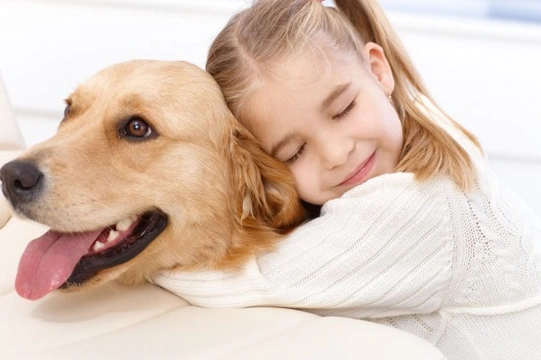
Kids and dogs: tips for unproblematic friendship
Research shows that contact between kids and dogs has many benefits, both physical and emotional. Learning how to care for a dog and understanding the responsibility involved is invaluable for kids. Children can even learn how to cope with loss when the time comes for their pet to leave them. Children and dogs are a great mix for other reasons too: dogs can provide companionship, a playmate, and even therapeutic support in times of trouble or illness.
Sadly though, there are those tragic occasions when children get injured by dogs, whether their own or someone else's. When choosing a dog, it’s important to research the best dogs for children, but even then there can be mishaps. Some of these situations can be prevented when certain rules and guidelines are followed. There need to be boundaries for both kids and dogs.
Never, ever leave dogs and children together unsupervised
It only takes a second for a situation to change, and if no responsible adult is present, that's when tragedy could strike.
Respect each other's personal space
Dogs have personal space just like we do. When you’re teaching kids and dogs how to be around each other, make sure that your children learn to invite a dog to them for fuss, treats, or play. Whether it's a dog you know or one you don't, and whether it's at home or out on the street, the same rule applies. If the dog chooses not to accept that invitation, leave them be. Teach the kids not to approach any dog when they’re asleep or eating, or any dog that you haven't met before - even if they look friendly. If it's someone else's dog, ask first if it's OK to say hello.
Remind children that not all dogs are the same
They may be familiar with a dog at home who allows them to pull their tail, jump on them, ride on their back, or whatever - but not all dogs will tolerate this. In fact, even the most placid dogs or those that are deemed to be the best dogs for children shouldn't be expected to put up with that. One day they might just get fed up with it, or accidentally get hurt during rough play and protest with a snap, snarl, or bite.
Teach children about dog body language
A wagging tail does not automatically mean a dog is happy; it means he is in a "heightened state," which could be excited, fearful, or any number of emotions. The rest of the body language tells the full story, e.g., ears, panting, stance, and hackles. A survey once took place where children were shown a picture of a snarling dog baring its teeth. A worryingly high number of the children believed the dog was smiling and that it would be OK to approach. Read more about understanding a dog's body language. Kids and dogs stand a better chance of having a harmonious and beautiful relationship if kids understand the dog’s signals.
Ask the kids not to stare at dogs directly in the face
Dogs use eye contact so much for communication, and a friendly, curious, or anxious stare from a child can be interpreted in different ways. It could be taken as a threat, provoking the dog to attack. Or it could be seen as an invitation to play, leading an overly enthusiastic dog to accidentally bowl over a small child. For a child who is afraid of dogs, the best advice is not to make direct eye contact when they meet.
Never ignore a growl
It's a warning, and it means: "Do that again, and I will bite’. Take notice and back off, calmly and quietly and advise your children to do the same.
Never tease a dog
Whether with toys or food, this is guaranteed to backfire eventually and lead to problems. Don't let your kids encourage a dog to jump up - at some point they will get carried away and accidentally hurt someone or do some damage. Then they’ll probably get told off and that's not fair. And if your kids have a favourite toy you don't want the dog to get hold of, the obvious but simple solution is to not leave it where the dog can get it!
Keep calm
If play is getting out of hand, calm things down without shouting or panicking. When a dog is already hyper and wound up, don't do anything that will make them even more excited. A stressed-out dog is far more likely to calm down if everyone else is calm too. And if a dog has a repetitive habit such as tail-chasing, this may well be a sign of stress and something that needs attention, not something to be encouraged for entertainment purposes.
By following a few simple rules and understanding dogs and their nature, accidents can be avoided, and dogs and children can get along, have fun, and inevitably become lifelong friends. In fact, when you think about it - the same applies to adults too!



